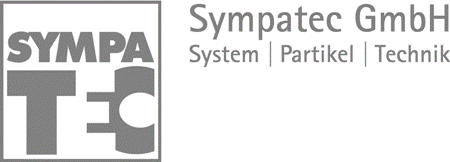The ingredients for powder coating are basically epoxy resin and polyester resin. These function as a matrix and binding agents for solid particles, and they also harden the finish. Special effects, such as matt finish, high polish, metallic look and pearl luster effect, are created with the use of several additives, aggregates and fillers; these can also produce durable surfaces that are repellent to dirt and resistant the environment.
The function and processing properties of powder coating are defined by particle size distribution. Regular analysis of particle size distribution ensures the powder coating quality. Prompt analysis with high-frequency laboratory or process analysis in real time help to optimize the time and energy consuming grinding processes.
Colored pigments are added to the formulation, which is then weighed and homogenized by mixing and extruding. While melting the resin particles, solid coating components are evenly dispersed and incorporated into the matrix. The melted mass solidifies during the cooling process; it is then crushed into coarse powder chips, then ground into a fine powder with particular grain size distribution, using classifier mill. The last step is to sieve the product in order to remove coarse particles.
Particle Size Distribution for Powder Coatings
.png)
Diagram shows a typical powder coating grain size distribution with an exceptionally high reproducibility of measuring results.
.png)
The trend diagram presents the particle sizes x10, x50 and x90. The evolution of size indicated is related to the classifier speed of the mill-classifier-unit. The higher the classifier speed the finer the particles (at given flow-rate).
The control of the particle size distribution of ground powder coating is crucial for both economic processing operation and for the final paint surface quality. The ideal distribution would be narrow – between 10 µm and 90 µm.
HELOS laser diffraction with RODOS dry dispersion is used to control the quality of ground, fine powder coating in the laboratory. It is possible to deliver reliable and reproducible measuring results within seconds with the use of pressurized air dispersion and measurement of the free aerosol jet. A very high rate of sample throughput is achieved without the need for sample preparation or routine cleaning.
Process control and regulation in real time is allowed by the online particle size analysis with laser diffraction sensor MYTOS, to which RODOS dry dispersion and automatic sampling is integrated. The on-line sensor delivers continuous information about the particle size of the process material and guarantees a complete quality monitoring in real-time. Adjustments of process variables, such as classifier speed, and their impact on particle size are tracked concurrently making process control much more intelligible. With an improved process understanding, any production may realise a significant reduction in out-of-specification batches.

This information has been sourced, reviewed and adapted from materials provided by Sympatec GmbH.
For more information on this source, please visit Sympatec GmbH.